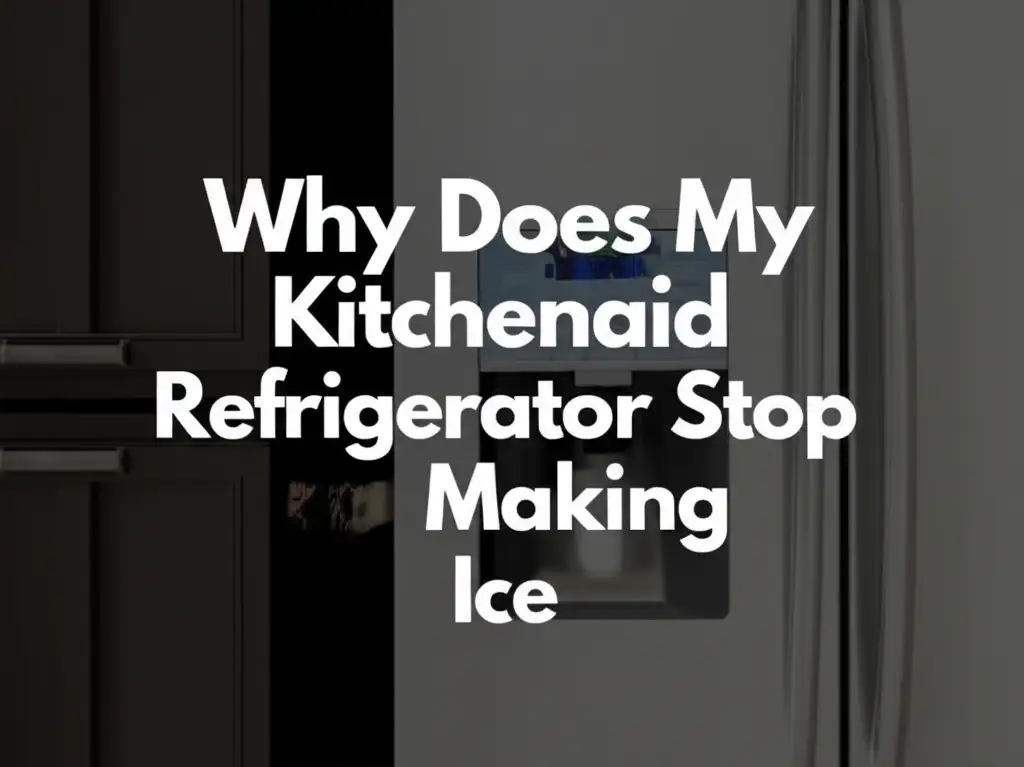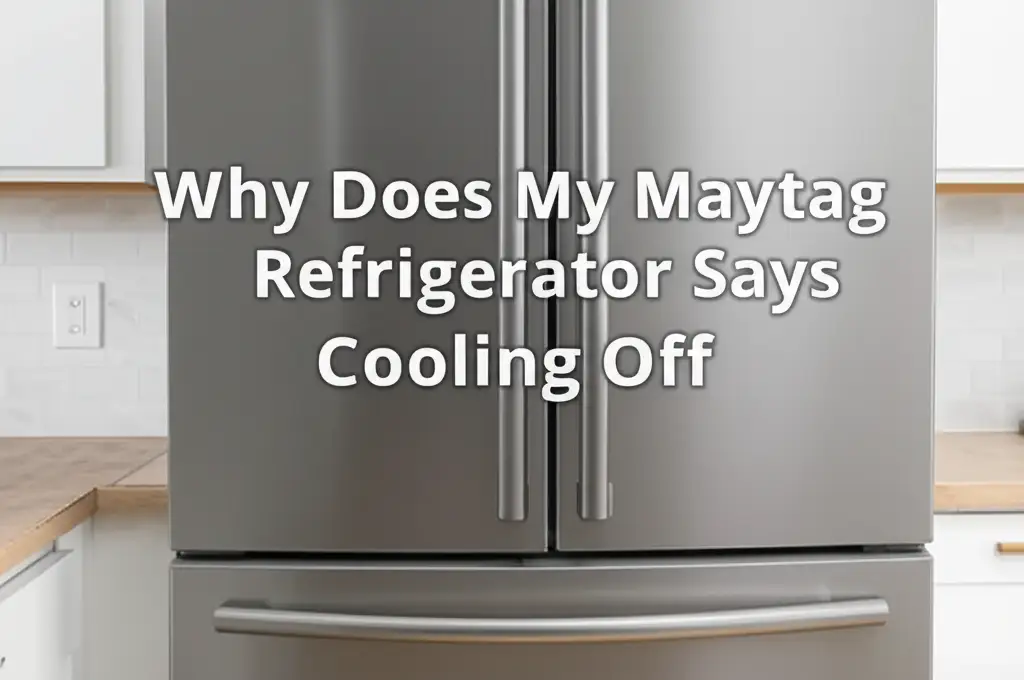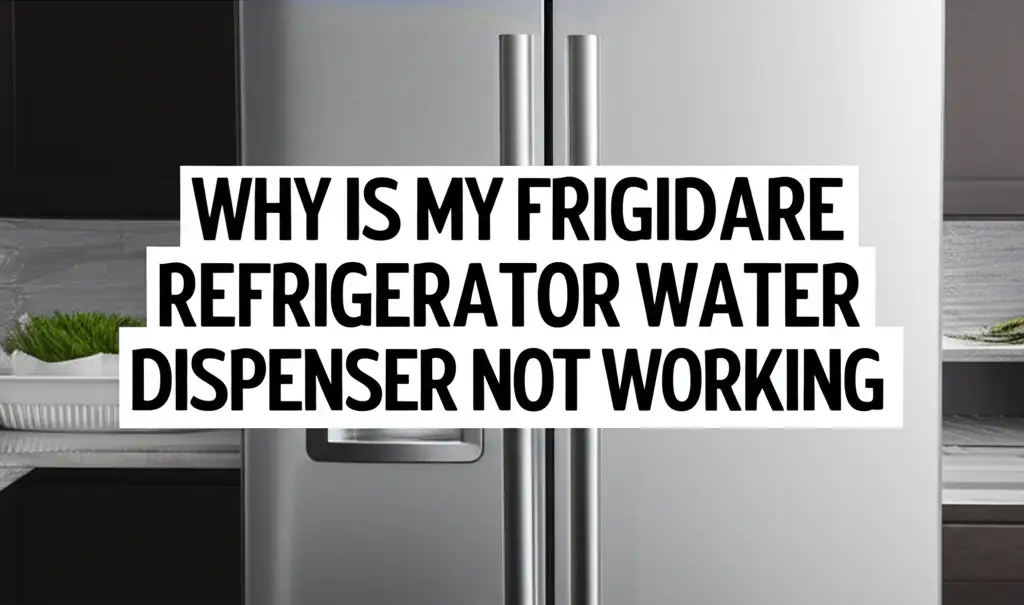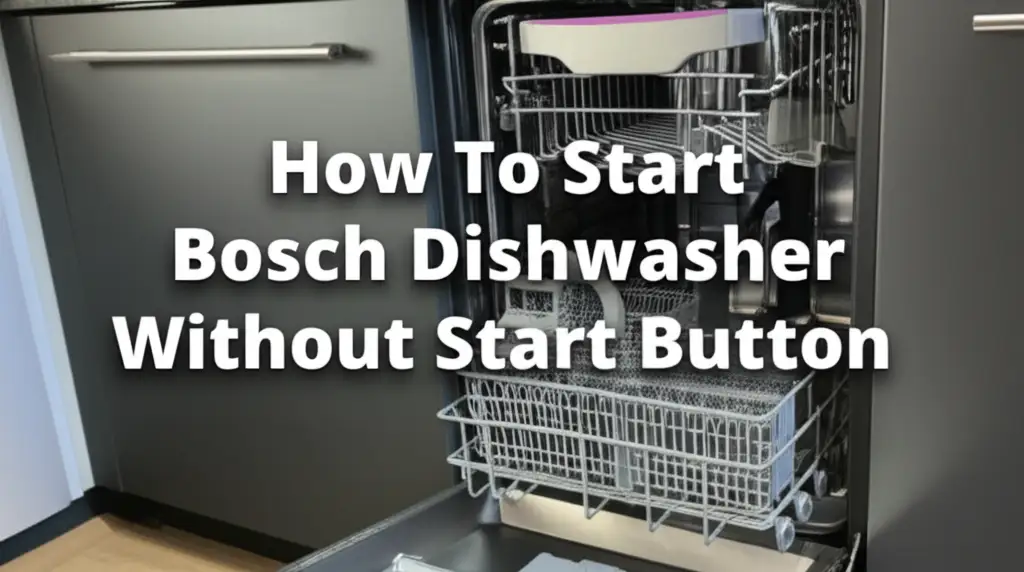· Katria Melrose · Appliance Troubleshooting · 23 min read
Why Is My Electrolux Refrigerator Not Making Ice
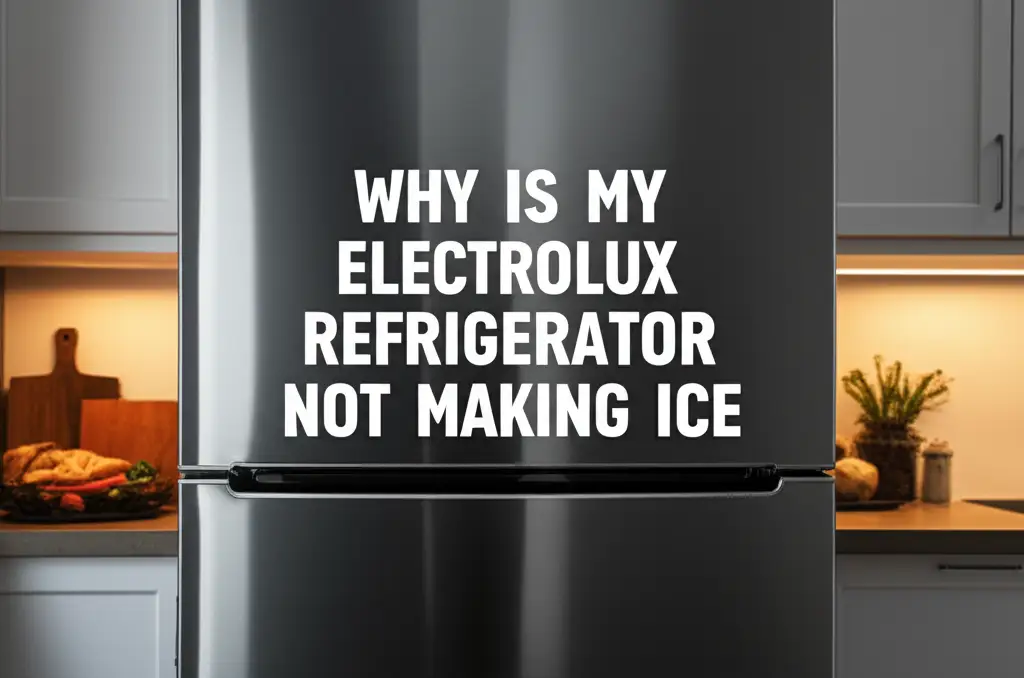
Why Is Your Electrolux Refrigerator Not Making Ice? Solutions
Finding your Electrolux refrigerator not making ice can be frustrating. You open the freezer, expecting fresh cubes, only to find an empty bin. This common issue affects many homeowners, turning a simple convenience into a puzzling problem. Your Electrolux appliance is usually reliable, so when the ice maker stops, you want answers. I understand how essential a working ice maker is, especially on a warm day.
This comprehensive guide helps you troubleshoot why your Electrolux refrigerator is not making ice. We explore common culprits, from basic settings to more involved component failures. You will learn easy checks and potential fixes to restore ice production. We aim to equip you with the knowledge to diagnose and solve this problem efficiently. Let us get your ice maker working again.
Takeaway
- Check Basics First: Confirm the ice maker is on and the freezer temperature is correct (0°F or -18°C).
- Inspect Water Supply: Verify the water line is connected and not kinked, and the water shut-off valve is open.
- Replace Water Filter: A clogged filter restricts water flow, preventing ice production. Change it every six months.
- Reset the Ice Maker: Perform a simple power cycle or use the test button to reset the ice maker’s functions.
- Look for Obstructions: Clear any ice jams in the dispenser chute or around the ice maker arm.
- Examine Key Components: Inspect the water inlet valve, ice maker module, and temperature sensor for faults.
- Seek Professional Help: If basic troubleshooting fails, a qualified technician can diagnose complex electrical or mechanical issues.
Concise Answer
Your Electrolux refrigerator is not making ice usually due to a lack of water supply, incorrect freezer temperature, a tripped ice maker switch, or a faulty ice maker component. Common fixes include checking water lines, replacing the water filter, adjusting the freezer temperature, or resetting the ice maker unit.
Initial Checks and Power Supply Concerns
When your Electrolux refrigerator is not making ice, the first step is to check the most basic things. These simple checks often resolve the issue without needing complex repairs. Sometimes, the problem is as straightforward as a setting being off or a minor power interruption. It is easy to overlook these initial steps, but they are crucial for effective troubleshooting.
First, confirm that your ice maker is actually turned on. Many Electrolux models have a simple on/off switch located directly on the ice maker unit. This switch is often a small toggle or a button labeled “On/Off.” If it is in the “Off” position, flip it to “On.” It might have been accidentally bumped or turned off during cleaning. I have personally seen this happen more times than I can count.
Next, verify the freezer temperature. Ice makers require a specific cold environment to freeze water into ice. Your freezer should maintain a temperature of 0 degrees Fahrenheit (-18 degrees Celsius) or lower. If the freezer is too warm, water will not freeze, or it will freeze too slowly. Use an appliance thermometer to get an accurate reading inside the freezer. Adjust the thermostat if necessary and wait several hours for the temperature to stabilize. A refrigerator that is not cooling correctly might also affect the freezer’s ability to make ice; consider if your Electrolux refrigerator is warm but freezer cold as a potential related issue.
Finally, consider the power supply to the ice maker. Sometimes, the entire refrigerator or just the ice maker module can experience a power glitch. A quick reset can often fix minor electronic hiccups. Unplug your Electrolux refrigerator from the wall outlet for about 5 minutes, then plug it back in. This hard reset can clear error codes or restore proper function to the ice maker’s control board. If your refrigerator recently experienced a power outage, you may also want to know how to reset an Electrolux refrigerator after a power outage to ensure all systems are functioning properly.
Water Supply Issues and Connections
A common reason for an Electrolux refrigerator not making ice is a problem with the water supply. The ice maker needs a steady flow of water to fill the ice molds. If the water supply is interrupted or restricted, the ice maker cannot produce ice, even if everything else is working correctly. It is like trying to fill a glass from a turned-off faucet.
Begin by checking the water supply line that connects your refrigerator to your home’s water valve. This line is usually a thin plastic or copper tube located behind the refrigerator. Look for any visible kinks, bends, or damage that might restrict water flow. Straighten any kinks you find. Ensure the line is not pinched against the wall or other objects. A severely pinched line can completely block water from reaching the ice maker.
Next, locate the water shut-off valve. This valve controls the water flow to your refrigerator. It is often found behind the refrigerator, under the sink, or in the basement. Make sure this valve is fully open. If it is partially closed, water flow will be too weak for the ice maker to operate correctly. Sometimes, these valves can become stiff or partially seized over time, so ensure it is turned as far as it can go in the open direction.
You should also check the household water pressure. Low water pressure can prevent the water inlet valve from opening fully or prevent enough water from entering the ice maker. If you notice low water pressure in other faucets in your home, this might be a systemic issue. A professional plumber may need to assess your home’s overall water pressure. This is a less common issue, but it can certainly cause problems for your ice maker.
Finally, check if the water dispenser on your refrigerator door is working. If water flows from the dispenser, it confirms that water is reaching the refrigerator. If no water comes out, the problem is definitely with the water supply, the water filter, or the water inlet valve. This step helps narrow down the potential issues. If you are experiencing similar issues where your Frigidaire refrigerator is not making ice but water works, many of these troubleshooting steps will apply to your Electrolux appliance as well, given their shared design elements.
Clogged Water Filter and Inlet Valve Malfunctions
A frequently overlooked cause for an Electrolux refrigerator not making ice is a clogged water filter. Your refrigerator’s water filter cleans the water before it enters the ice maker and dispenser. Over time, this filter collects sediments and impurities, which can eventually block water flow. A clogged filter is a very common culprit.
Electrolux recommends changing your water filter every six months. If it has been longer than that, or if you notice a significant decrease in water dispenser flow, the filter is likely the problem. Even if water still dispenses, the pressure might be too low for the ice maker to fill its molds properly. Replace the old filter with a new, genuine Electrolux filter. Make sure to follow the manufacturer’s instructions for installation. After replacing the filter, run several gallons of water through the dispenser to purge air from the system. This also flushes out any carbon dust from the new filter.
Another critical component is the water inlet valve. This valve is an electrically operated device located at the back of your refrigerator, where the water supply line connects. Its job is to open and allow water into the ice maker when signaled by the ice maker control board. If this valve is faulty, it will not open, or it will not open enough, preventing water from reaching the ice maker.
You can test the water inlet valve. First, disconnect power to the refrigerator for safety. Locate the valve and inspect it for any visible cracks or signs of corrosion. Sometimes, the solenoid on the valve can burn out. You might hear a buzzing sound from the valve if it is trying to open but cannot. If the valve fails to open or is clogged internally, it will need replacement. This often requires a multimeter to test for proper voltage and continuity, which might be a job for a professional.
Sometimes, a small screen or filter inside the water inlet valve itself can become clogged with mineral deposits. This can restrict water flow even if the valve is functioning electrically. Cleaning or replacing this small filter might solve the issue. However, accessing and servicing the water inlet valve often means pulling the refrigerator away from the wall. This can be heavy work and might require assistance.
Freezer Temperature and Thermostat Issues
The freezer temperature plays a crucial role in ice production. If your Electrolux refrigerator is not making ice, and other checks have come up empty, the freezer’s environment might be the problem. Ice requires a consistently low temperature to form properly and efficiently. Even a slight increase in temperature can significantly slow down or halt ice production.
As mentioned before, the ideal freezer temperature for ice production is 0 degrees Fahrenheit (-18 degrees Celsius). If your freezer is set too high, say 10 degrees Fahrenheit (-12 degrees Celsius), the water in the ice maker molds will simply not freeze. It might even just turn slushy. Use a reliable thermometer to verify the actual temperature inside your freezer. Do not rely solely on the refrigerator’s digital display, as it can sometimes be inaccurate. Place the thermometer between frozen items and check it after a few hours.
If the temperature is too high, adjust your freezer’s thermostat or control panel settings. Give the appliance several hours to stabilize after any temperature adjustment. Opening the freezer door too frequently or for too long can also cause temperature fluctuations. Make sure the freezer door seal is intact and not letting warm air in. You can check this by closing the door on a piece of paper; if it slides out easily, the seal might be compromised.
Sometimes, the freezer’s evaporator coils might be covered in ice, preventing proper cooling. This often points to a defrost system issue. If the defrost heater, defrost thermostat, or defrost timer is faulty, ice will build up on the coils. This effectively insulates them, making the freezer unable to reach or maintain the correct temperature. You might also notice frost build-up inside the freezer compartment. A defrost system problem usually requires professional attention, as it involves disassembling parts of the freezer. This is a more complex issue than a simple temperature adjustment.
A malfunctioning temperature sensor or thermistor can also lead to incorrect temperature readings, causing the compressor to run less often than needed. If the sensor sends a false reading that the freezer is cold enough, the cooling system will not activate, resulting in warmer temperatures and no ice. Testing these components usually requires a multimeter and some technical knowledge.
Ice Maker Unit Malfunctions and Mechanical Failures
Once you have ruled out water supply and temperature issues, the problem might lie directly with the ice maker unit itself. The ice maker is a complex mechanical and electrical component. It has several parts that must work in sequence to produce ice. If any of these parts fail, ice production stops. My experience tells me that these units can be sensitive.
First, check the ice maker’s feeler arm or bail wire. This arm swings down to detect if the ice bin is full. If the bin is full, or if the arm is accidentally pushed into the “up” position, the ice maker will stop production. Make sure the arm is in the down position if the bin is empty. This is a very simple check, but it is often overlooked. Sometimes, ice cubes can get stuck and prevent the arm from moving freely, fooling the ice maker into thinking the bin is full.
Next, inspect the ice maker mold for any obstructions. Old ice or mineral deposits can sometimes build up in the molds where the water freezes. This prevents new ice cubes from forming properly or releasing from the mold. You might need to gently scrape out any residue. Ensure the ejector blades or fingers are not jammed. These blades push the ice cubes out of the mold. If they are stuck, the ice maker cycle cannot complete.
The ice maker module itself contains a motor, gears, and a control board. These components govern the entire ice-making cycle, including filling with water, freezing, and ejecting ice. If the motor is burned out, or the gears are stripped, the ice maker will not cycle. You might hear no sounds from the unit at all, or perhaps strange clicking or grinding noises if something is jammed. In many cases, if the internal components of the ice maker module fail, the entire unit needs to be replaced. Replacing the entire ice maker assembly is often simpler and more cost-effective than trying to repair individual internal parts.
Finally, some Electrolux ice makers have a test button. Pressing this button often initiates a full cycle, allowing you to observe if the unit fills with water, freezes, and ejects ice. If the unit does not respond to the test button, it points more strongly to an internal failure of the ice maker module or its power supply. Before replacing, ensure the ice maker unit is receiving power. This often involves checking wires for loose connections or corrosion.
Clogged Dispenser Chute and Ice Jams
Even if your Electrolux refrigerator is successfully making ice, you might not see any cubes because they are stuck. A common problem is ice getting jammed in the dispenser chute or the ice bucket itself. This can prevent newly made ice from falling into the bin or block ice from being dispensed when you need it. I have had to deal with this myself many times.
First, open the freezer door and remove the ice bucket. Look inside the bucket for any large clumps of ice that have frozen together. Sometimes, moisture can get into the bin, causing cubes to stick. Break up any large chunks of ice using a plastic or wooden utensil. Avoid using anything sharp or metal that could damage the plastic bin. Empty the bin completely and wash it with warm water to remove any sticky residue, then dry it thoroughly before returning it.
Next, inspect the ice dispenser chute. This is the pathway that ice travels from the bucket to the dispenser opening on the door. Moisture from the dispenser area can sometimes freeze inside the chute, creating an ice blockage. Use a flashlight to look up into the chute for any visible ice. You might need to use a wooden spoon or a plastic spatula to carefully dislodge any ice jams. In some cases, a hairdryer on a low, cool setting can gently melt the ice, but be cautious not to overheat any plastic components. Never use boiling water directly in the chute.
Check the auger motor and the auger itself. The auger is the spiral mechanism inside the ice bucket that rotates to push ice towards the dispenser. If the auger is jammed with ice or if the motor is faulty, ice will not dispense. Turn the auger by hand to see if it moves freely. If it is stiff or stuck, there is likely an ice jam around it. If it moves freely but does not turn when the dispenser lever is pressed, the auger motor might be faulty.
Lastly, consider the crushed ice versus cubed ice setting. If the dispenser is set to “crushed ice,” it might struggle to dispense if large cubes are present, or if the crushing mechanism is partially jammed. Try switching it to “cubed ice” to see if that helps. The crushing mechanism itself can sometimes accumulate ice or debris, causing blockages. Regularly emptying and cleaning the ice bin can prevent many of these types of jams. For advice on regular maintenance that can prevent such issues, consider tips on how to clean your refrigerator ice maker thoroughly.
Control Board and Sensor Faults
Modern Electrolux refrigerators rely heavily on electronic control boards and various sensors to manage their functions. If your Electrolux refrigerator is not making ice, and you have checked the mechanical and water supply issues, the problem might be electronic. These components act as the brain and nervous system of your appliance. They orchestrate every step of the ice-making process.
The main control board, or the ice maker control board, sends signals to the water inlet valve, the ice maker motor, and other components. If this board malfunctions, it may fail to send the correct signals at the right time. For example, it might not tell the water inlet valve to open, or it might not activate the ice maker’s harvest cycle. A faulty control board can manifest in various ways, from complete non-responsiveness to intermittent ice production. Sometimes, a power surge can damage the delicate circuits on the board.
Testing a control board is complex and usually requires a multimeter to check for voltage and continuity at various points. This is typically a job for a qualified appliance technician. They can diagnose if the board is sending power to the correct components or if it is simply dead. If the control board is indeed faulty, it will need to be replaced. This is often one of the more expensive repairs.
Temperature sensors, or thermistors, also play a vital role. The ice maker itself might have a sensor that detects when the water in the mold is frozen solid. If this sensor fails, the ice maker will not initiate the harvest cycle, or it might try to harvest before the ice is fully formed. Similarly, the freezer’s main temperature sensor ensures the compressor runs to maintain the optimal temperature for ice production. If this sensor provides incorrect readings to the main control board, the freezer might not get cold enough.
Lastly, the door switch can be a culprit. Most refrigerators have a door switch that turns off the ice maker and dispenser when the freezer door is open. This prevents water spills and accidental ice ejection. If this switch is faulty, the refrigerator’s control system might think the door is constantly open, preventing the ice maker from operating. You can usually test the door switch by pressing it in and out while observing the interior light or dispenser. If the light stays on or the dispenser does not respond, the switch might be faulty. Replacing a door switch is usually a straightforward task.
Professional Assistance and When to Call a Technician
After attempting the basic troubleshooting steps, you might find that your Electrolux refrigerator is still not making ice. This is when it is wise to consider calling a professional appliance technician. Some problems are too complex or dangerous for a DIY repair. Working with electrical components and refrigerant lines requires specialized knowledge and tools. Do not hesitate to call for help when needed.
You should consider professional assistance if:
- You have no water from the dispenser: If your water supply is fine and the filter is new, but you still get no water from the dispenser, the water inlet valve or main control board might be the issue. These components can be tricky to test and replace safely.
- The freezer temperature is inconsistent or too warm: If you have checked basic settings and the freezer still cannot maintain 0°F (-18°C), there might be a problem with the compressor, condenser coils, evaporator coils, or the sealed refrigerant system. These are complex components that only certified technicians should handle. If your Electrolux refrigerator is warm but freezer cold this indicates a more serious underlying cooling system failure.
- The ice maker module is unresponsive: If the ice maker unit does not cycle, make any sounds, or respond to the test button after you have reset the appliance and checked for power, the module itself might be defective. Replacing the entire ice maker assembly can be straightforward for some, but a technician ensures proper installation and calibration.
- You suspect an electrical issue: Any problem involving wiring, circuit boards, or voltage testing can be dangerous if you lack electrical experience. Technicians have the right tools and safety training to work with live circuits.
- You are uncomfortable with the repair: If any step in the troubleshooting process makes you feel unsure or unsafe, it is always better to err on the side of caution. Appliance repair can be intricate.
A qualified technician can accurately diagnose the root cause of the problem using specialized diagnostic tools. They have access to specific service manuals for Electrolux models, allowing them to pinpoint the exact faulty part. They also carry common replacement parts, often leading to a quicker repair. While calling a technician incurs a cost, it can save you time, prevent further damage to your refrigerator, and ensure the repair is done correctly and safely. Always ask for an estimate before any work begins.
Preventing Future Ice Maker Issues
Maintaining your Electrolux refrigerator’s ice maker can prevent many common problems. Regular care and attention can keep the ice flowing smoothly. Taking proactive steps is always better than reacting to a breakdown. I have found that a little maintenance goes a long way.
First and foremost, consistently replace your refrigerator’s water filter. Electrolux recommends doing this every six months. A fresh filter ensures clean water delivery and maintains optimal water flow and pressure to the ice maker. Mark your calendar or set a reminder on your phone. Neglecting the filter is one of the most frequent reasons for reduced ice production or a complete stop.
Regularly clean your ice maker and ice bin. Empty the ice bin completely about once a month. Wash the bin with warm, soapy water, then rinse and dry it thoroughly before returning it. This removes any accumulated mineral deposits, ice shavings, or sticky residues that can cause cubes to clump together or jam the auger. You can also gently wipe down the ice maker unit itself with a damp cloth, being careful around electrical components. For a deeper clean of the unit, follow specific instructions on how to clean a refrigerator ice maker.
Check your freezer temperature periodically. An ideal temperature of 0°F (-18°C) is crucial for efficient ice production. Use an appliance thermometer to verify the actual temperature. Adjust the thermostat if needed. Also, ensure the freezer door seals are clean and intact. A tight seal prevents warm air from entering, which can cause frost buildup and affect cooling efficiency. You can test the seal by closing the door on a dollar bill; if it pulls out easily, the seal might need cleaning or replacement.
Inspect the water supply line and the area around the refrigerator annually. Look for any kinks, leaks, or signs of wear on the water line. Ensure the refrigerator is not pushed too close to the wall, which could pinch the line. Keep the area around the condenser coils (usually at the back or bottom of the refrigerator) clean and free of dust and pet hair. Dirty coils make the compressor work harder, potentially impacting overall cooling efficiency, which can indirectly affect ice production. A clean coil means better performance.
Finally, be mindful of how you use the ice maker. Avoid overfilling the ice bin, as this can jam the feeler arm or cause ice to freeze into a solid block. If you are going on vacation, consider turning off the ice maker and emptying the bin to prevent a large block of ice from forming if the refrigerator is unplugged or if there is a power outage. Following these simple preventative steps can extend the life of your Electrolux ice maker and ensure a consistent supply of ice.
FAQ Section
How long does it take for an Electrolux ice maker to start making ice after being plugged in?
An Electrolux ice maker usually takes about 24 hours to produce its first batch of ice after being plugged in or reset. This allows the freezer to reach the optimal temperature of 0°F (-18°C) and the ice maker to complete its initial cycle. Patience is key during this initial period.
Why does my Electrolux ice maker make a humming noise but no ice?
A humming noise often indicates that the water inlet valve is trying to open but cannot. This can be due to low water pressure, a clogged water filter, or a faulty water inlet valve that is energized but unable to pass water. Check your water supply and filter first.
Can a clogged water filter really stop my Electrolux ice maker from working?
Yes, absolutely. A clogged water filter is a very common reason for an Electrolux refrigerator not making ice. The filter restricts water flow to the point where the ice maker cannot fill its molds properly. Replace your filter every six months for optimal performance.
How do I reset my Electrolux ice maker?
To reset most Electrolux ice makers, you can either unplug the refrigerator for 5-10 minutes and then plug it back in, or locate a test button on the ice maker module itself (often a small black or red button). Pressing the test button will usually initiate a cycle.
What if my Electrolux ice maker is frozen solid?
If your Electrolux ice maker is frozen solid, it indicates a potential defrost issue or an air leak. Turn off the ice maker and unplug the refrigerator. Allow the ice maker to completely thaw for several hours or even overnight. You can use a hairdryer on a low, cool setting to speed up thawing. Clean any residual water once thawed.
Does the freezer door switch affect the ice maker operation?
Yes, the freezer door switch plays a role. If the door switch is faulty, the refrigerator’s control system might incorrectly sense that the door is open. This will prevent the ice maker from cycling or dispensing ice to avoid spills and energy waste. Test the switch by checking if the interior light turns on and off properly.
Conclusion
Discovering your Electrolux refrigerator not making ice can disrupt your daily routine. We have explored a range of common reasons for this issue, from simple fixes to more complex component failures. I hope this guide has provided clarity and actionable steps for you. Starting with basic checks is always the best approach, saving you time and potentially avoiding unnecessary service calls.
Remember to always begin by verifying the obvious: ensure the ice maker is turned on, the freezer temperature is correctly set, and the water supply is flowing freely. A quick check of the water line and the water filter can often resolve the problem immediately. Many times, a simple reset can get your ice maker back on track.
If basic troubleshooting does not yield results, then delving into components like the water inlet valve or the ice maker module itself becomes necessary. However, for issues involving internal cooling systems, complex electronics, or if you feel uncomfortable with the repair, it is always best to call a qualified appliance technician. They possess the expertise and tools to diagnose and fix the problem safely and efficiently. By following these steps, you can confidently address why your Electrolux refrigerator is not making ice and get those refreshing cubes back in your life.


